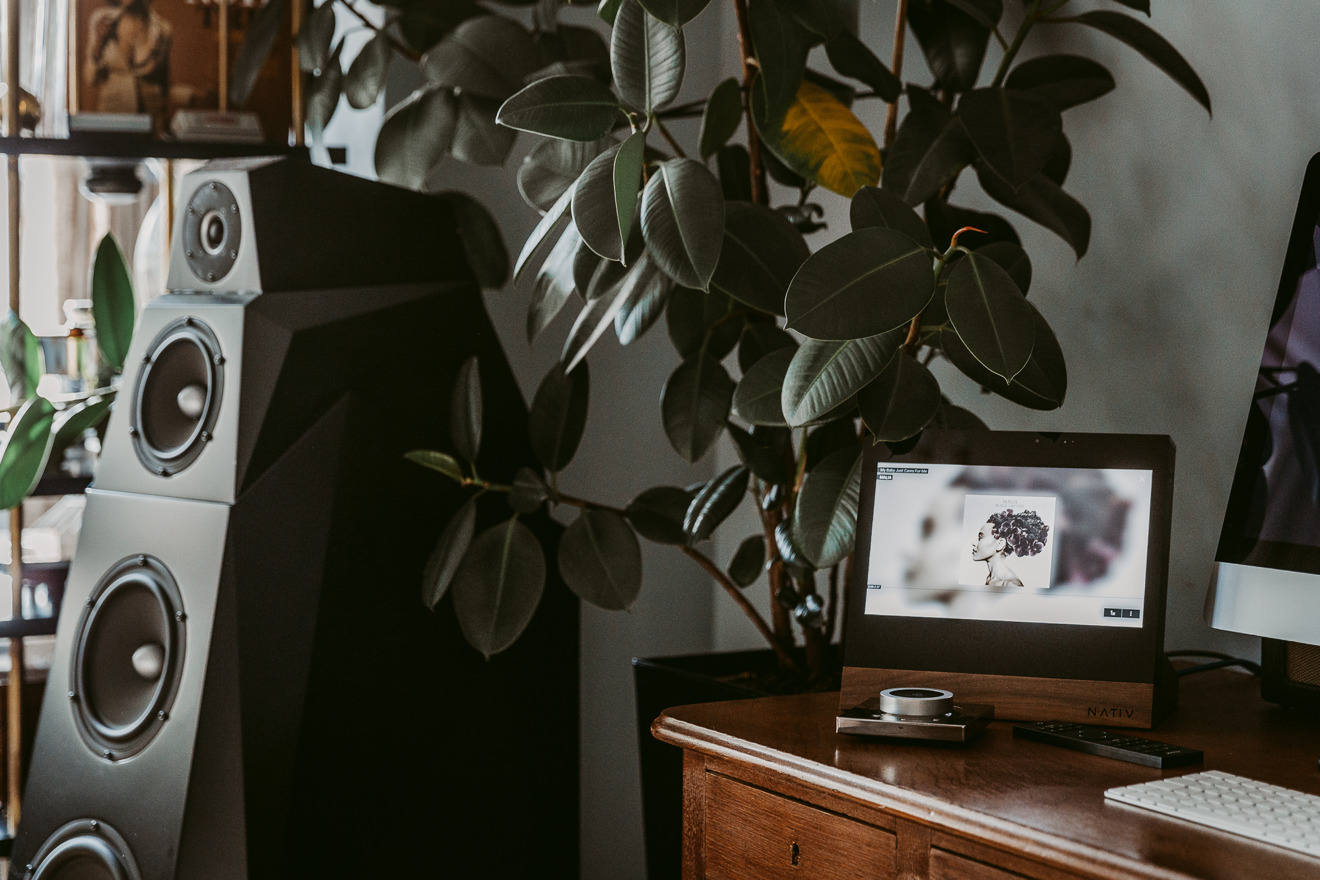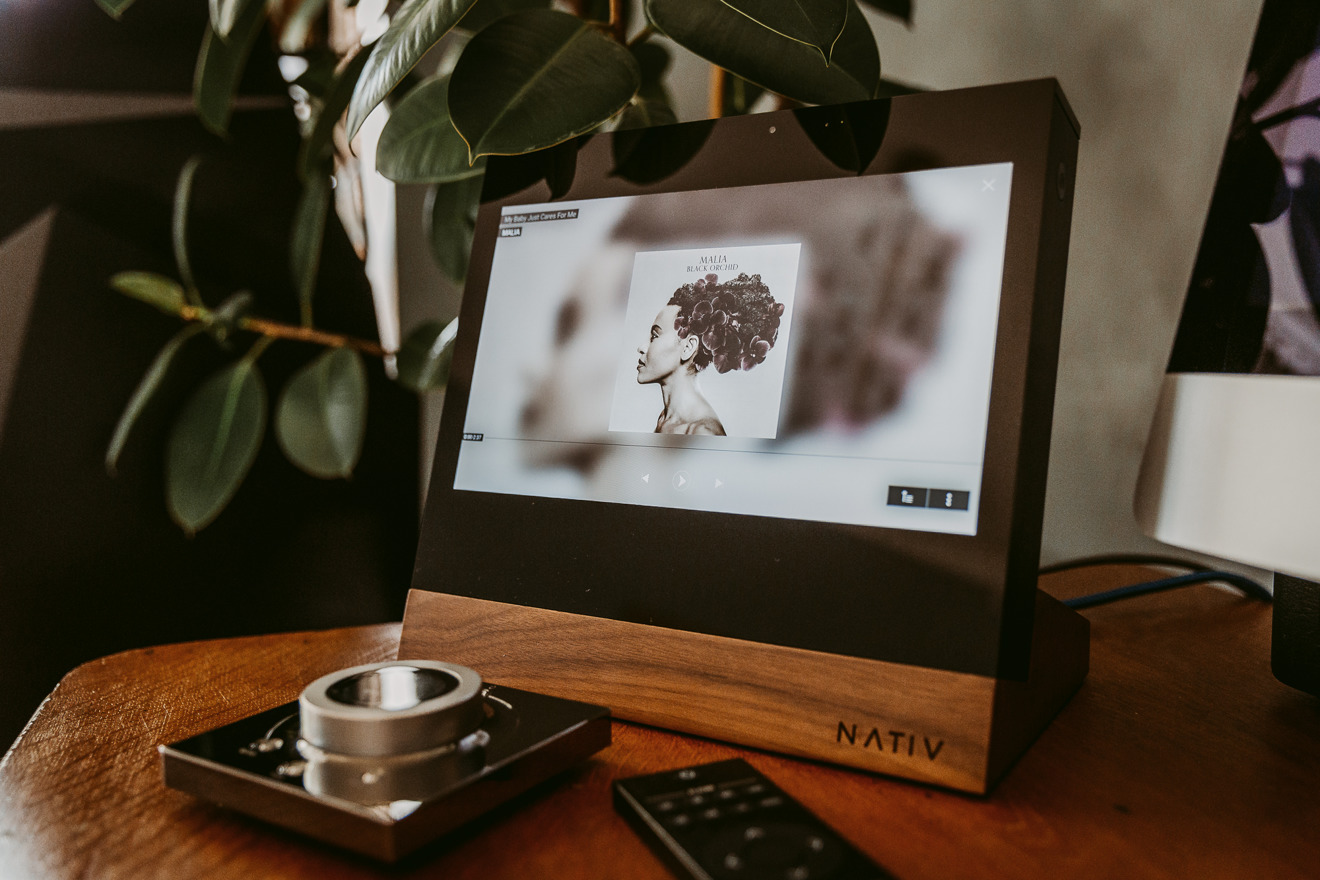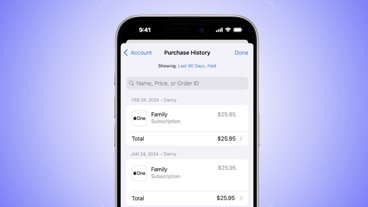Electronics maker Nativ on Wednesday launched the Vita, a high-end, touchscreen-based music player and server which has the rare feature of integrated Apple Music support.
The Vita uses an 11.6-inch, 1080p IPS display, and supports a number of other streaming services such as Spotify, Tidal, Pandora, Google Play Music, and SoundCloud. In some configurations music can be saved locally — while the default model lacks internal storage, there are 2- and 4-terabyte upgrade options, using either hard disks or SSDs. Alternately music can be pumped in from a network storage drive, a nearby Mac or Windows PC, a phone or tablet, or direct analog and digital inputs.
The device includes USB, SPDIF, HDMI, and AES/EBU ports, as well as Bluetooth, gigabit Ethernet, and 802.11ac Wi-Fi connections. The last allows control via iOS, Apple Watch, and Android apps, as well as pushing audio elsewhere via AirPlay, Google Cast, Spotify Connect, Sonos systems, or other Nativ products.
Supported audio formats include filetypes like MP3, OGG, AIFF, WAV, FLAC, and Apple's ALAC, in qualities up to 32 bits and 384 kilohertz. Video functions allow the Vita to stream music videos and even run YouTube, whether on its own screen or a TV. TV output requires HDMI or Google Cast.
The product includes an IR remote, and can also take voice commands.
Vita prices start at $1,599 for a driveless model with an oak stand, and can range as high as $3,099 for a unit with a walnut stand and 4 terabytes of SSD storage.
 Roger Fingas
Roger Fingas









 Charles Martin
Charles Martin
 Christine McKee
Christine McKee
 Wesley Hilliard
Wesley Hilliard
 Malcolm Owen
Malcolm Owen
 Andrew Orr
Andrew Orr
 William Gallagher
William Gallagher
 Sponsored Content
Sponsored Content








9 Comments
No, thanks. I'd rather use that money to spend on speakers instead.
So Apple is licensing Apple Music to other vendors?
On checking, and to their credit as a genuine audiophile product, this DOES ALSO natively support hi-res formats like DSD (the native format of SACD - Super Audio CD), using a Burr Brown DAC. That is well done. And to their credit, the styling and interface look very smart and neat.
My only audiophile concern may be that: playing back hi-res audio through one of these front ends usually involves digital interference ... e.g. using software to control volume (through the computer) means that the signal is being digitally 'messed' with by the computer (this invariably happens with iTunes), as distinct from taking the digital source to the D/A converter, and letting the amplifier do volume adjustments in pure analog. I am not sure if that is the case here - but it is the usual caveat to such interfaces in the audiophile community.